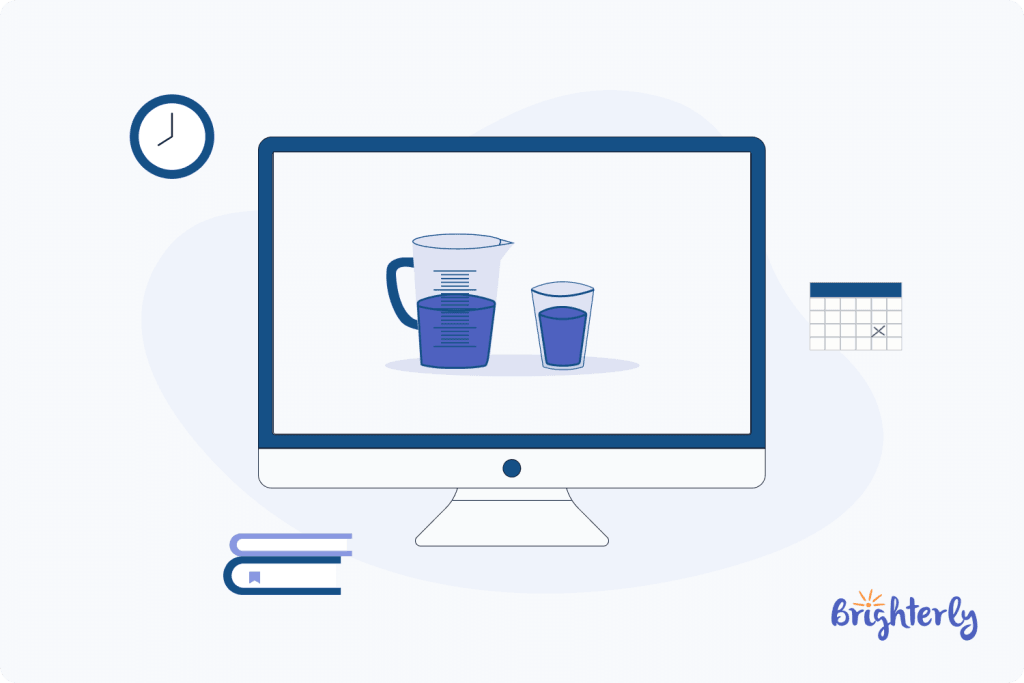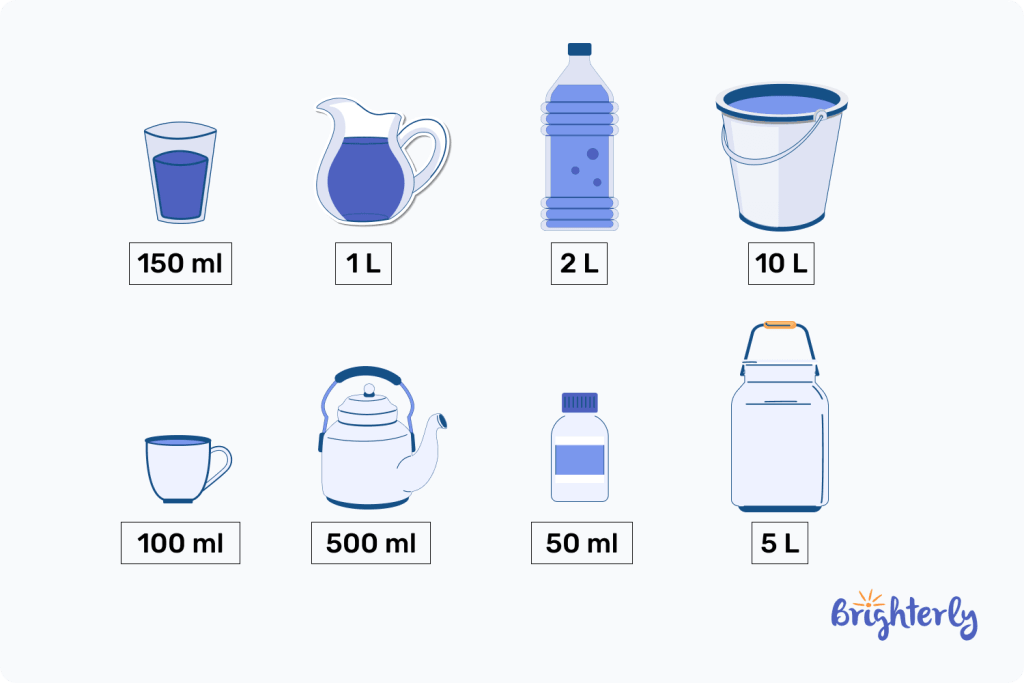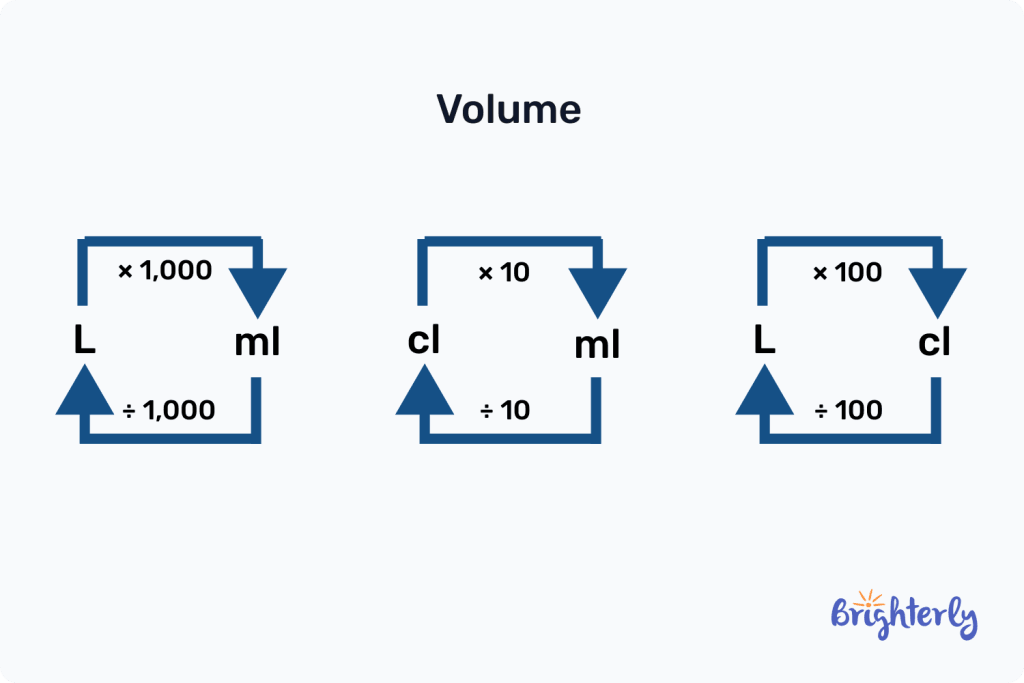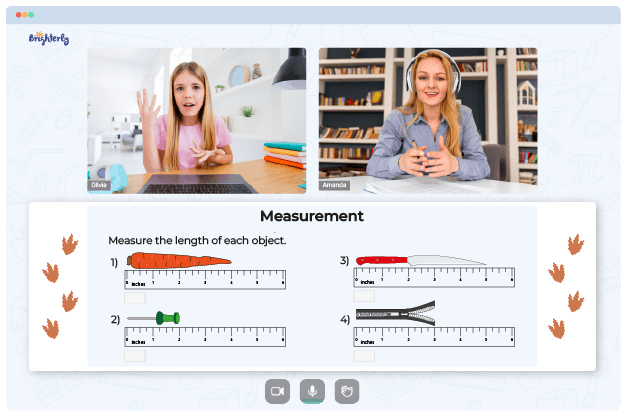Liter in Math – Definition with Examples
reviewed by Jo-ann Caballes
Updated on November 27, 2024
Are you ready to take another journey into the world of math with Brighterly?
We are here to help you with your math learning – if there are any concepts you struggle with, we help make them straightforward and interesting to learn.
Today, we’re going to be delving into the world of measurements and explaining everything you need to know about a key measurement of volume, the liter.
The unit liter is one of the most common ways we measure volume, whether that’s how much water is in a bottle, how much milk you need in a recipe or the capacity of a fish tank.
Here, we’ll define liter, examples of liters, what can be measured in liters and how it compares to other metrics. We’ll also provide you with practice test questions and fun math worksheets so you can improve your knowledge even further.
What is a liter in math?
A liter is a key unit of measurement that you will encounter in your everyday life. A liter is a measurement of volume, meaning it is key to a range of math topics including geometry and calculus.
The liter helps us understand space and quantity and is used in math and other areas of school and life, including science experiments, cooking recipes and much more. You will undoubtedly use the liter a lot in your everyday life!

Are liters metric?
Yes, liters are metric. This means they are a unit of measurement in the metric system.
Liter: definition
The definition of liter is a metric unit of volume, and the liter abbreviation is l. So, what does a liter look like? It can be visualized as a cube that is 10 centimeters (or 1 decimeter) on each side – that is the size of a liter. By knowing this, you can picture the liter more easily and understand its relation to other metrics.
While the liter is not officially a part of the International System of Units (IS), it is a widely used unit of measurement and can be used in the IS framework thanks to its prevalence in our lives. It’s one metric system measurement that is used fairly frequently in the US, along with ounces (oz).
Liter examples
There are many examples of liters in the world around us, and a lot of the drinks you consume every day will be measured in either liters or milliliters! Here are some 1 liter examples:
- The volume of water bottles
- The capacity of milk bottles
- The amount of soda we can pour into a mug
- The capacity of a jug or other containers

What is measured in liters?
Liquids are most commonly measured in liters. It is a versatile unit of volume, and we often use it to quantify the volume of liquids. Things that are 1 liter include water, soda, petrol, milk and juice.
But did you know that the liter is not only used to measure liquids? We can also use it to measure dry items like flour, sugar and grains. This is because these items are formed of small grains, and in some instances, measuring the volume they take up can be more effective than measuring their weight. In the same way, you might see 2 cups of flour in a baking recipe, you may also see 2 liters of flour!
Liquid measurements: liters
Liquids are measured in liters because some liquids are heavier than others, making it a more practical way to measure how much liquid we are consuming or adding to a cooking recipe. The volume offers a more accurate assessment of the amount of liquid we have.
The great thing about measuring liquids in liters is that it is easily visualized and understood. Because it’s on the metric system, we can also scale it up or down to measure much larger or much smaller volumes – for example, measuring the volume of a syringe or the volume of a swimming pool.
Things measured in liters and milliliters
Liters (l) and milliliters (ml) are used frequently to measure quantities of volume. Some examples of things measured in liters or milliliters are:
- Water in a mug or bottle
- Milk needed for a mug of coffee or a recipe
- Flour or sugar required for baked goods
- Soup, in small or large quantities
- Blood, often measured in ml
- Honey, measured using spoons
A liter is equal to 1000 milliliters, making it a larger unit of measurement.
Liter with other metrics
The liter forms part of the metric system, meaning it is one unit in a range of units on the liter scale that increases tenfold each time:
Measurement |
Comparison to liter |
| Milliliter | 1 liter = 1000 milliliters |
| Centiliter | 1 liter = 100 centiliters |
| Deciliter | 1 liter = 10 deciliters |
| Decaliter | 1 liter = 0.1 decaliters |
| Hectoliter | 1 liter = 0.01 hectoliters |
| Kiloliter | 1 liter = 0.001 kiloliters |

The liter can also be converted to other common units of measurement:
Measurement |
Comparison to liter |
| Ounce (oz) | 1 liter = 35.1951 ounces |
| Cup (c) | 1 liter = 4.22675 cups |
| Quarts (qt) | 1 liter = 1.05669 quarts |
| Gallon (gal) | 1 liter = 0.219969 gallons |
| Imperial pint (pt) | 1 liter = 1.75975 imperial pints |
| Teaspoon (tsp) | 1 liter = 202.884 teaspoons |
| Tablespoon (tbsp) | 1 liter = 67.628 tablespoons |
Solved math tasks: examples
Ready to test your knowledge of the liter measurement? Try out our solved math tasks below, then check our answers to see if you’re right!
Solved math task 1
You have a bottle with 2 liters of water in it. Convert this to ounces.
Answer:
| 67.628 ounces. |
To convert your liter measurement to ounces, you multiply it by 33.814.
2 l x 33.814 = 67.628 oz.
Solved math task 2
You have a syringe that measures 5 ml in liquid. How many liters is this?
Answer:
| 0.005 liters. |
There are 1000 milliliters in a liter, so you need to divide your ml value by 1000.
5 ml ÷ 1000 = 0.005 l.
Liter: practice math problems
Liter: worksheets
Take your knowledge of the liter to the next level by trying out our cool math worksheets. They are filled to the brim with games, puzzles and real-life scenarios to bring the world of liters to life and make learning measurements fun!
- Metric system worksheets
- Metric conversion worksheets
- Measurement worksheets
- Measuring liquid volume worksheets





